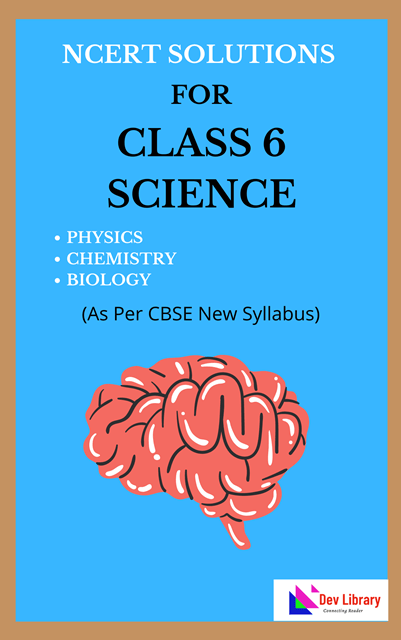NCERT Class 6 Science Chapter 4 Exploring Magnets Solutions English Medium to each chapter is provided in the list so that you can easily browse through different chapters NCERT Class 6 Science Chapter 4 Exploring Magnets Notes and select need one. NCERT Class 6 Science Chapter 4 Exploring Magnets Question Answers Download PDF. NCERT Class 6 Solutions for Science English Medium.
NCERT Class 6 Science Chapter 4 Exploring Magnets
Also, you can read the NCERT book online in these sections Solutions by Expert Teachers as per Central Board of Secondary Education (CBSE) Book guidelines. NCERT Class 6 Science Textual Solutions are part of All Subject Solutions. Here we have given NCERT Class 6 Science Chapter 4 Exploring Magnets Notes English Medium. CBSE Class 6 Science in English Textbook Solutions for All Chapters, You can practice these here.
Exploring Magnets
Chapter: 4
| Let us enhance our learning |
1. Fill in the blanks:
(i) Unlike poles of two magnets ____________ each other, whereas like poles ___________ each other.
Ans: Attract, Repel.
(ii) The materials that are attracted towards a magnet are called ______________.
Ans: Magnetic materials.
(iii) The needle of a magnetic compass rests along the ___________ direction.
Ans: North-South.
(iv) A magnet always has _____________ poles.
Ans: Two.
2. State whether the following statements are True (T) or False (F).
(i) A magnet can be broken into pieces to obtain a single pole. [ ]
Ans: False.
(ii) Similar poles of a magnet repel each other. [ ]
Ans: True.
(iii) Iron filings mostly stick in the middle of a bar magnet when it is brought near them. [ ]
Ans: False.
(iv) A freely suspended bar magnet always aligns with the north-south direction. [ ]
Ans: True.
3. Column Ⅰ shows different positions in which one pole of a magnet is placed near that of the other. Column ⅠⅠ indicates the resulting interaction between them for different situations. Fill in the blanks.
| Column Ⅰ | Column ⅠⅠ |
| N – N | _______________ |
| N – ___________ | Attraction |
| S – N | _______________ |
| _____________ – S | Repulsion |
Ans:
| Column Ⅰ | Column ⅠⅠ |
| N – N | Repulsion |
| N – S | Attraction |
| S – N | Attraction |
| S – S | Repulsion |
4. Atharv performed an experiment in which he took a bar magnet and rolled it over a heap of steel U-clips (Fig. 4.15).
According to you, which of the options given in Table 4.3 is likely to be his observation?
Table 4.3: Number of pins attracted by the magnet at its various positions.
| Position A | Position B | Position C |
| (i) 10 | 2 | 10 |
| (ii) 10 | 10 | 2 |
| (iii) 2 | 10 | 10 |
| (iv) 10 | 10 | 10 |
Ans: From the figure, it is clear that the ends of the magnet have more iron fillings attached to it. This is because the magnet’s strength lies more at the ends of the magnet. Hence option (i) is correct.
5. Reshma bought three identical metal bars from the market. Out of these bars, two were magnets and one was just a piece of iron. How will she identify which two amongst the three could be magnets (without using any other material)?
Ans: Reshma can identify the magnets by bringing each metal bar close to the other two bars one by one. The two magnets will attract the iron bar but will repel or attract each other depending on their poles. If a bar repels one bar and attracts another, it indicates that the repelling bar is also a magnet. The one that only attracts and does not repel is the piece of iron.
6. You are given a magnet which does not have the poles marked. How can you find its poles with the help of another magnet which has its poles marked?
Ans: To find the poles of an unmarked magnet, bring one end of the marked magnet near one end of the unmarked magnet. If they attract, the unmarked magnet’s end is the opposite pole (i.e., if the marked North pole attracts, then the unmarked end is South pole). If they repel, then the poles are similar.
7. A bar magnet has no markings to indicate its poles. How would you find out near which end its North pole is located without using another magnet?
Ans: Suspend the magnet freely using a string. The end that points towards the north direction is the North pole of the magnet.
8. If the earth is itself a magnet, can you guess the poles of earth’s magnet by looking at the direction of the magnetic compass?
Ans: Yes, we can guess the poles of Earth’s magnet by looking at the direction of the magnetic compass. The north-seeking end of the compass needle points towards the geographic North Pole of the Earth, which is actually the magnetic South pole of the Earth’s magnet.
9. While a mechanic was repairing a gadget using a screw driver, the steel screws kept falling down. Suggest a way to solve the problem of the mechanic on the basis of what you have learnt in this chapter.
Ans: The mechanic needs to magnetise his screwdriver which will not just lift the screw but hold it in place while he works. To magnetise a screwdriver he needs a magnet. He be advised to, “place the screwdriver on a wooden table. Then keep one end (pole) of the magnet at one end of the metallic part of the screwdriver. Move the magnet along the length of the metallic part of screw driver. Lift it and bring the same pole of magnet to the same end of the screwdriver he began, and repeat moving it over the length of the screwdriver. On repeating this process about 30 times the screwdriver will get magnetised”.
10. Two ring magnets X and Y are arranged as shown in Fig. 4.16. It is observed that the magnet X does not move down further. What could be the possible reason? Suggest a way to bring the magnet X in contact with magnet Y, without pushing either of the magnets.
Ans: Magnet X must be floating because the like poles are facing each other (like poles repel each other). If we change the direction of the magnet X by rotating it the unlike poles will face each other and the magnets will come closer. Magnet X is likely repelling magnet Y because their like poles are facing each other. By rotating magnet X, so that opposite poles face each other, the magnets will attract and move closer.
11. Three magnets are arranged on a table in the form of the shape shown in Fig. 4.17. What is the polarity, N or S, at the ends 1, 2, 3, 4 and 6 of the magnets? Polarity of one end (5) is given for you.
Ans: End 5: We are given that End 5 is the North Pole (N).
End 1: End 1 is near End 5 and is repelling it. This means that End 1 is also the North Pole (N).
End 2: End 2 is attracting End 1. This means that End 2 is the South Pole (S).
End 3: End 3 is repelling End 2. This means that End 3 is also the North Pole (N).
End 4: End 4 is attracting End 3. This means that End 4 is the South Pole (S).
End 6: End 6 is repelling End 4. This means that End 6 is also the North Pole (N).
Thus, the polarity at the ends of the magnets is as follows:
(i) End 1: N (North Pole).
(ii) End 2: S (South Pole).
(iii) End 3: N (North Pole).
(iv) End 4: S (South Pole).
(v) End 6: N (North Pole).

Hi! my Name is Parimal Roy. I have completed my Bachelor’s degree in Philosophy (B.A.) from Silapathar General College. Currently, I am working as an HR Manager at Dev Library. It is a website that provides study materials for students from Class 3 to 12, including SCERT and NCERT notes. It also offers resources for BA, B.Com, B.Sc, and Computer Science, along with postgraduate notes. Besides study materials, the website has novels, eBooks, health and finance articles, biographies, quotes, and more.



